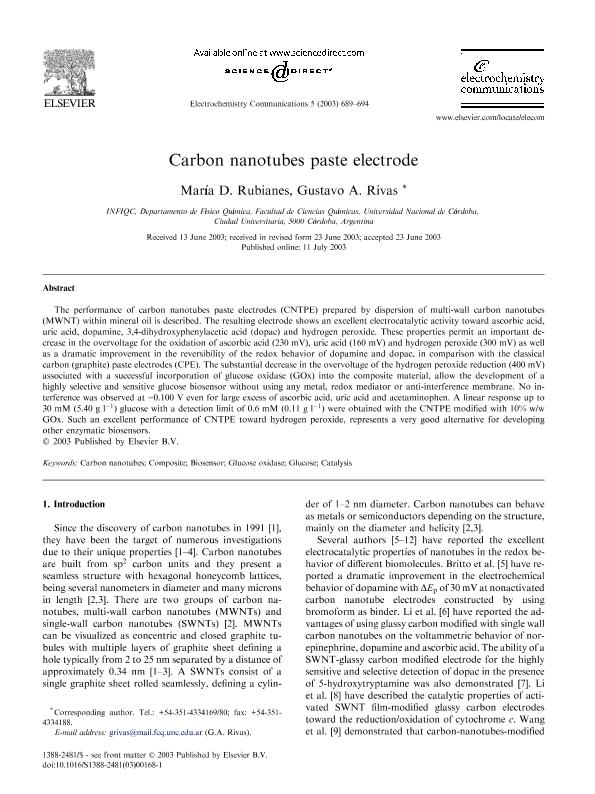Artículo
Carbon nanotubes paste electrode
Fecha de publicación:
08/2003
Editorial:
Elsevier Science Inc
Revista:
Electrochemistry Communications
ISSN:
1388-2481
Idioma:
Inglés
Tipo de recurso:
Artículo publicado
Clasificación temática:
Resumen
The performance of carbon nanotubes paste electrodes (CNTPE) prepared by dispersion of multi-wall carbon nanotubes (MWNT) within mineral oil is described. The resulting electrode shows an excellent electrocatalytic activity toward ascorbic acid, uric acid, dopamine, 3,4-dihydroxyphenylacetic acid (dopac) and hydrogen peroxide. These properties permit an important decrease in the overvoltage for the oxidation of ascorbic acid (230 mV), uric acid (160 mV) and hydrogen peroxide (300 mV) as well as a dramatic improvement in the reversibility of the redox behavior of dopamine and dopac, in comparison with the classical carbon (graphite) paste electrodes (CPE). The substantial decrease in the overvoltage of the hydrogen peroxide reduction (400 mV) associated with a successful incorporation of glucose oxidase (GOx) into the composite material, allow the development of a highly selective and sensitive glucose biosensor without using any metal, redox mediator or anti-interference membrane. No interference was observed at −0.100 V even for large excess of ascorbic acid, uric acid and acetaminophen. A linear response up to 30 mM (5.40 g l−1) glucose with a detection limit of 0.6 mM (0.11 g l−1) were obtained with the CNTPE modified with 10% w/w GOx. Such an excellent performance of CNTPE toward hydrogen peroxide, represents a very good alternative for developing other enzymatic biosensors.
Palabras clave:
Carbon Nanotubes
,
Composite Electrodes
,
Biosensor
,
Glucose
Archivos asociados
Licencia
Identificadores
Colecciones
Articulos(IMBIV)
Articulos de INST.MULTIDISCIPL.DE BIOLOGIA VEGETAL (P)
Articulos de INST.MULTIDISCIPL.DE BIOLOGIA VEGETAL (P)
Citación
Rubianes, María Dolores; Rivas, Gustavo Adolfo; Carbon nanotubes paste electrode; Elsevier Science Inc; Electrochemistry Communications; 5; 8; 8-2003; 689-694
Compartir
Altmétricas




